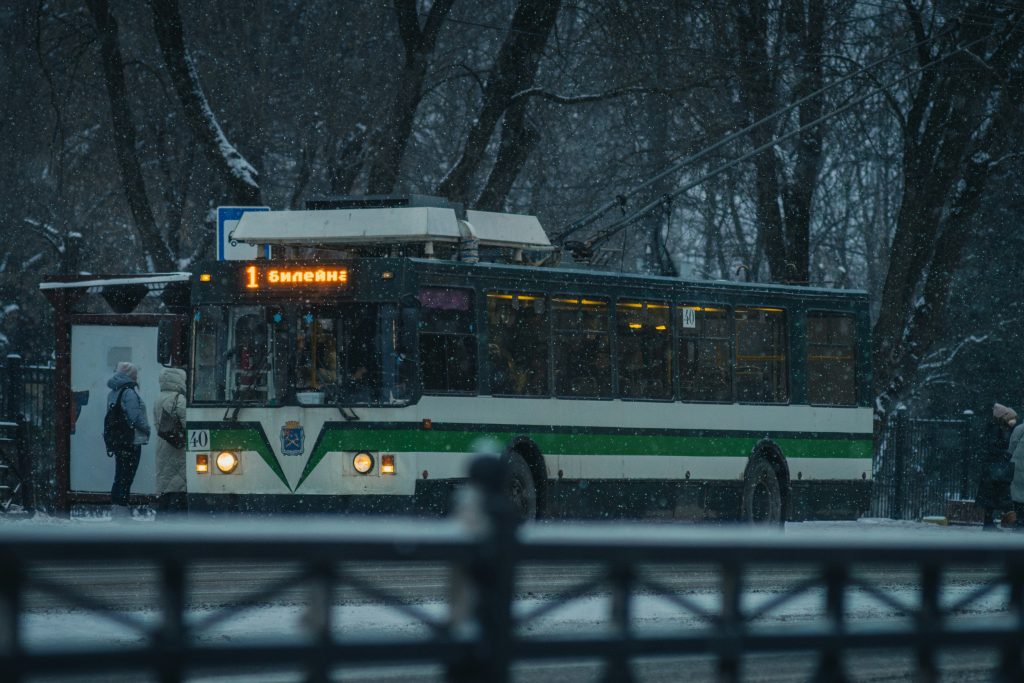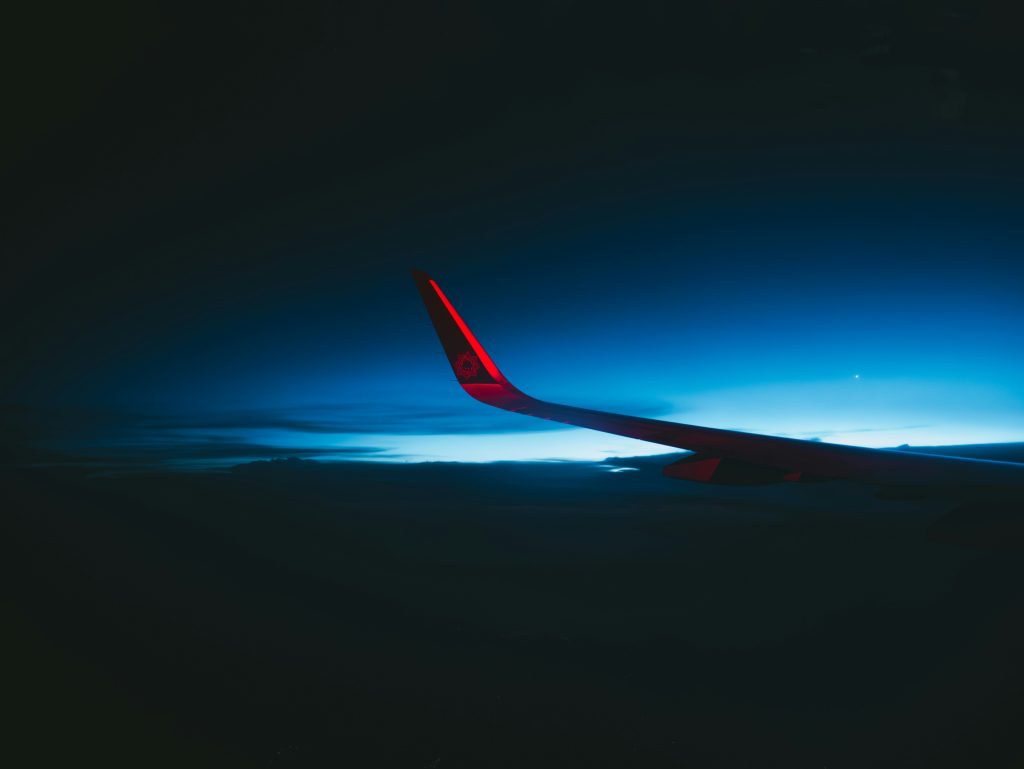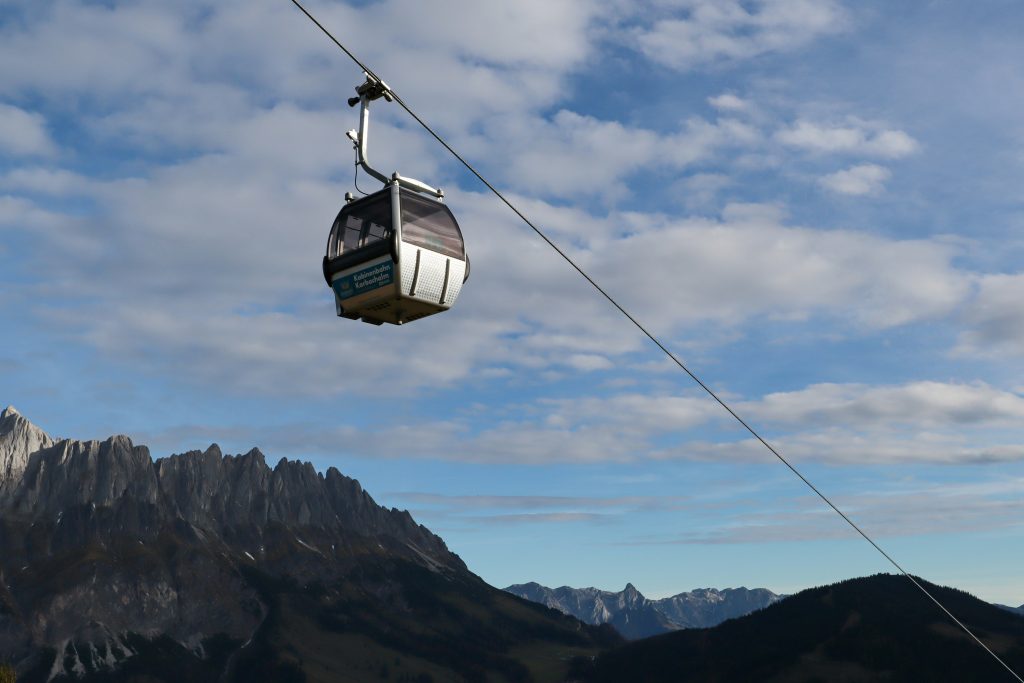運輸署推出全新網上電子牌照平台「牌證易」
## 網上電子牌照平台的誕生
運輸署於昨日(14日)正式推出了「牌證易」網上電子牌照平台,這一全新的服務旨在為香港的車主和司機提供更為便捷的牌照查詢及續領功能。用戶只需通過「智方便」進行登記,便可隨時隨地查閱自己的駕駛執照及車輛執照的到期日,並了解違例駕駛的記分紀錄。
## 平台的主要功能
「牌證易」的推出讓車主和司機不再需要排隊等候或親自到運輸署辦理相關手續。使用者可以在線上輕鬆查詢自己持有的牌證資料,並隨時掌握牌照的有效性及到期時間。此外,平台還提供續領車輛牌照和駕駛執照的便利服務,讓繁瑣的手續變得簡單直觀。
## 其他即將推出的功能
運輸署表示,未來將會持續優化「牌證易」的功能,預計在明年第二季推出更多便民措施。例如,未來用戶將能夠享受到自動填寫申請表格的功能,進一步提升使用體驗。這些新增功能將大大減少用戶的辦理時間,提升整體效率。
## 便利生活的數位轉型
「牌證易」的推出不僅是運輸署數位轉型的一部分,更是香港智慧城市建設的重要一步。這一平台的運行,將促進公共服務的數位化,提升市民在日常生活中的便利性,同時也能有效減少人力資源的浪費。
## 市民反應
對於這一新服務,市民普遍表示歡迎,認為這樣的網上平台能夠為他們的日常生活帶來實際的便利。許多車主表示,過去需要到運輸署親自查詢或辦理續牌的繁瑣過程,現在能夠在家中輕鬆完成,實在是太方便了。
## 總結
隨著科技的發展,香港的公共服務逐漸朝著便捷化和數位化的方向邁進。「牌證易」網上電子牌照平台的推出,標誌著運輸署在提升服務效率和市民滿意度方面的重要進展。未來,期待更多的功能能夠上線,讓香港的交通管理更加智能化。
Tags: 便民服務, 智慧城市, 牌證易, 運輸署, 電子牌照
香港推出電子牌照平台,便利車主及司機管理牌證
## 便捷的電子牌照平台
香港運輸署於今日(14日)隆重推出全新的「牌證易」網上電子牌照平台,旨在提升車主和司機的服務體驗。這個平台專為交通使用者設計,讓他們能夠輕鬆地續領車輛牌照和駕駛執照,並且隨時查閱自己的牌證資料。
## 一站式服務
「牌證易」的推出標誌著交通服務的數位化進程。用戶只需透過網上平台([elicensingportal.td.gov.hk/login](elicensingportal.td.gov.hk/login))即可完成各項手續,無需親臨運輸署辦事處,節省了大量的時間和精力。
這個平台不僅提供牌照續領的功能,還包括查詢牌證的屆滿日期、申請進度、結果以及違例駕駛記分紀錄等實用資訊。這些功能的整合,讓車主和司機能夠全面掌握自己的駕駛狀況,提升道路安全。
## 用戶友好的設計
為了確保所有居民均能輕鬆使用,「牌證易」平台採用了直觀的界面設計,無論是年輕用戶還是年長者,都能快速上手。用戶只需經過簡單的登記過程,即可成為「牌證易」的註冊用戶,並享受便捷的服務。
## 期待未來的發展
隨著科技不斷進步,香港的交通管理也在持續演變。「牌證易」的推出只是開始,未來運輸署還計劃進一步擴展平台的功能,例如提供更多即時通知服務,讓用戶能夠在第一時間獲知重要的牌證信息。
## 總結
「牌證易」不僅是香港交通數位化的重要一步,更是提升市民生活質素的創新舉措。隨著這樣的平台投入使用,香港的交通管理將會變得更加高效和安全。期待未來能有更多類似的數位服務出現,為市民帶來更多便利!
Tags: 數位化服務, 牌證易, 電子牌照, 香港交通
除夕跨年夜通宵服務升級,深圳灣口岸將迎接更多旅客!
### 除夕跨年夜的煙花盛宴即將來臨
隨著2023年的結束,香港將迎來一年一度的除夕跨年倒數煙花匯演,這個傳統活動吸引了成千上萬的市民及旅客共襄盛舉。而為了讓更多人能夠參與這場視覺盛宴,特區政府與深圳市政府展開了深入的合作,宣布將於除夕夜延長深圳灣口岸的服務時間。
### 深圳灣口岸通宵服務,羅湖口岸延長至凌晨2時
根據最新消息,深圳灣口岸將改為通宵服務,這是除夕夜首次實行通宵開放,旨在確保旅客能夠無縫過境,享受跨年煙花秀的魅力。除了深圳灣,羅湖口岸的服務時間也將延長至凌晨2時,為過境的旅客提供更為便利的選擇。
### 政府全方位規劃,確保節日期間有序運行
政務司司長陳國基在最近的跨部門工作小組會議上,強調了各政府部門需協同合作,確保除夕及元旦期間的接待工作順利進行。他表示,這一系列的安排不僅能夠提升旅客的過境體驗,還能進一步促進香港與內地的交流與互動。
### Pokémon熱潮席捲深圳,旅客潮流新去處
除夕的煙花匯演還不是唯一的亮點!在深圳多地標及商場,Pokémon小精靈們也紛紛現身,吸引了大批的Pokemon訓練家。人才公園的超巨型10米高卡比獸及海岸城的超夢,讓遊客們有機會在煙花盛典前,享受一場精靈的狂歡。
### 除夕煙花秀的魅力無法抵擋
每年除夕,香港的煙花匯演都會成為焦點,這次的煙花秀將以璀璨絢麗的火花為主題,為2023年畫上完美的句點。隨著服務時間的延長,預計將有更多的旅客前來觀賞,這也為深圳灣口岸帶來了新的商機。
### 服務升級,助力旅遊經濟繁榮
隨著通宵服務的推行,深圳灣口岸將成為除夕夜的熱點,為香港的旅遊經濟注入新的活力。這一措施不僅解決了旅客在跨年期間的交通問題,也展示了兩地政府在推動經濟復甦方面的積極作為。
Tags: 旅遊, 深圳灣, 煙花秀, 跨年
TADA在香港正式試行,零佣金模式挑戰傳統網約車市場
### TADA正式進軍香港
新加坡網約車平台TADA於近日在香港正式啟動試行服務,這一新興平台以其獨特的零佣金營運模式,力求在競爭激烈的網約車市場中占有一席之地。
### 零佣金模式的優勢
與Uber等傳統網約車平台不同,TADA不向司機收取佣金,這意味著司機的收入不會因平台的抽成而受到影響。根據TADA的行政總裁Sean Kim的介紹,這一模式不僅能夠降低乘客的車資,還能確保司機獲得更高的收入。這一創新舉措在目前網約車市場中無疑是一種挑戰,尤其是在其他平台普遍收取10%至30%佣金的情況下,TADA的推出令人期待。
### 政府政策的影響
隨著TADA的進駐,香港政府也計劃在明年針對網約車平台進行規管,並提出相關立法建議。這一政策的出台,使得網約車市場的未來充滿不確定性。尤其是Uber的私家車服務在香港面臨著合法性質疑,這也使得TADA的試行變得更具意義。
### 覆蓋範圍及預約費用
TADA目前的服務覆蓋範圍包括港島、九龍及香港國際機場,並對車程的預約費用進行了詳細規定。根據服務政策,100元以下的車程將收取8元預約費,而100元以上則為9元。這一價格設定對於日常出行的乘客來說,無疑是一個優惠的選擇。
### 司機登記情況
至今,TADA已經吸引了約3000名司機登記參加,這其中大部分為私家車司機。公司也向獲得政府發牌的的士車隊發出合作邀請,試圖擴大其服務網絡,為乘客提供更多選擇。
### 結語
TADA的進入,無疑為香港的網約車市場注入了新鮮血液。隨著政策動向的明朗化以及市場競爭的加劇,未來的網約車市場將會呈現出更多的變化。TADA的零佣金模式是否能夠成功站穩腳跟,成為市場的佼佼者,值得我們持續關注。
Tags: TADA, 網約車, 零佣金, 香港
台鐵推出奢華輕旅行列車「海風號」
# 台鐵推出奢華輕旅行列車「海風號」
## 體驗海岸線的極致風情
台灣的美麗海岸線,無疑是旅遊愛好者心中的一大寶藏。為了讓民眾能更深入地享受這片絕美的自然景觀,台鐵最近推出了全新的旅遊列車「海風號」。這款列車採用EMU500型電聯車,融合了台灣多樣的地形與季節變化,為乘客提供了一場奢華的視覺與味覺盛宴。
「海風號」的設計靈感來自於台灣的海景,每一個車廂的視窗都如同畫框般,捕捉著流動的海岸風光。乘客在列車上,不僅能欣賞到美麗的海景,還能享受到隨著季節變化而轉換的山景,讓每一次的旅程都充滿新鮮感。
## 結合地方創生,探索台灣的多元文化
除了壯麗的風景,「海風號」也在行程中融入了地方創生的理念。列車上提供的下午茶,精選當地特色美食,讓旅客在享受美景的同時,也能品嚐到各地的風味。這不僅是一次旅行,更是一場對台灣文化的深度探索。
## 乘坐體驗與服務
乘客在「海風號」上不僅能享受到優雅的環境,還有專業的服務團隊為每位旅客提供貼心的服務。列車內部裝潢以自然元素為主,使用了木質座椅和柔和的燈光,營造出舒適而放鬆的氛圍。每個車廂都設計了觀景區,讓乘客在旅途中可以隨時停下來拍下美麗的瞬間。
## 旅遊新選擇,適合各類型旅客
「海風號」的推出,無疑為喜愛旅行的民眾提供了一個新的選擇。不論是想要與家人共享天倫之樂,或是與朋友共度悠閒的午後,這列車都能滿足各種需求。特別是對於想要逃離都市喧囂的年輕人,這樣的輕旅行形式,無疑是一種理想的選擇。
台鐵的「海風號」不僅是一次旅行,更是一段美好回憶的開始。隨著旅客的反應愈來愈熱烈,未來可能還會推出更多主題列車,讓台灣的旅遊業更添活力。
## 結語
隨著「海風號」的正式啟航,台灣的旅遊市場將迎來新的轉機。這不僅是對於旅遊體驗的重新定義,更是對於台灣自然美景的全新詮釋。未來,讓我們期待更多這樣的創新旅遊產品,為我們的生活帶來更多美好的驚喜。
—
Tags: 台灣海景, 地方創生, 海風號, 輕旅行
澳門輕軌橫琴線正式通車,出行更便捷!
### 澳門輕軌橫琴線正式通車
今日(2日),澳門輕軌橫琴線正式通車,這條新線路的開通標誌著澳門公共交通進入了一個全新的時代。橫琴線全長約2.2公里,設有兩個車站,分別是氹仔蓮花站和橫琴站。乘客從蓮花站出發,前往橫琴站的車程僅需約2分鐘,每6分鐘就會有一班車次,為市民提供了更加便捷的出行選擇。
### 市民踴躍體驗新線路
當天,首班車從氹仔蓮花站準時發出,吸引了不少澳門居民前來體驗這條新開通的輕軌線路。乘客羅先生表示:“出行更加方便快捷了!之前從澳門前往橫琴需要乘坐巴士,路途中還需要經過不少站點,現在輕軌開通後,真的省時又省力。”
### 行政長官出席通車儀式
在通車儀式上,澳門特區行政長官賀一誠出席並表示,橫琴線的開通不僅能提升市民的出行效率,還將進一步促進澳門與橫琴之間的交流與合作。輕軌公司董事會主席何蔣祺也在致辭中提到,這條新線路的開通具有重要的意義,將為市民的日常生活帶來便利。
### 便利的交通選擇
橫琴線的開通,讓乘客在出站後,可以輕鬆步行前往出入境大堂,無需再經歷繁瑣的轉乘過程。這樣的便利措施,無疑會吸引更多的市民選擇輕軌作為出行的主要交通工具。
### 前景展望
隨著澳門輕軌網絡的不斷擴展,未來的交通體系將更加完善,市民的出行選擇將會更加多樣化。橫琴線的開通,是澳門在公共交通建設上邁出的重要一步,未來還會有更多的線路陸續投入運營,為市民提供更高效的服務。
### 結語
澳門輕軌橫琴線的正式通車,不僅是交通基礎設施建設的一次升級,更是澳門現代化交通體系的一部分。隨著這條新線路的開通,市民的出行將會變得更加便捷,期待未來的輕軌網絡能為更多的市民帶來便利與舒適的乘車體驗。
Tags: 交通便利, 市民出行, 澳門, 澳門輕軌, 輕軌
桃園市交通局推出便捷公車服務 讓鳳鳴車站啟用更順暢
隨著新北市鶯歌區台鐵鳳鳴車站即將於明日啟用,桃園市交通局積極配合,特別推出針對八德地區民眾的便捷公車服務,為乘客提供無縫接駁。這項新措施不僅能提升公共交通的便利性,也將大幅改善當地居民的出行體驗。nn鳳鳴車站的啟用,標誌著桃園與新北之間交通聯繫的進一步加強。桃園市交通局官員表示,新的公車路線設計考量了八德居民的日常出行需求,並針對主要的交通樞紐與居民聚集區進行停靠,確保每位乘客都能輕鬆抵達車站。nn為了讓民眾更了解這項新服務,桃園市交通局還將在車站周邊設置清晰的公車資訊指示牌,並提供實時的公車動態查詢服務,讓乘客可以隨時掌握公車的到站時間。nn這次鳳鳴車站的開幕,除了方便了八德居民的日常出行,也有助於提高當地的經濟活動。隨著交通的便利,將吸引更多的遊客與商業活動進入該區域,帶動地區發展。nn為了慶祝鳳鳴車站的啟用,新北市政府將於啟用當天舉辦一系列的慶祝活動,包括線上直播、音樂表演以及當地特色市集,讓民眾在享受便捷交通的同時,也能體驗當地的文化魅力。nn桃園市交通局呼籲居民積極利用新推出的公車服務,並關注即將舉行的慶祝活動,讓我們共同期待鳳鳴車站為生活帶來的新改變。
Tags: 桃園交通, 鳳鳴車站
首爾迎來117年來最嚴重11月降雪,交通混亂影響航班
近日,首爾市迎來了自117年以來最嚴重的11月降雪,這場降雪不僅是本季的第一場雪,也創下了積雪深度達40厘米的紀錄。根據韓國氣象廳的報告,從26日夜間開始,猛烈的降雪持續了數天,造成了廣泛的交通混亂。航班和船隻的運行受到嚴重影響,導致全國約150架航班和89艘次客船被迫取消。這場大雪不僅打亂了民眾的出行計劃,還讓當地的景點如景福宮等地被厚厚的白雪覆蓋,形成了一幅壯觀的冬季畫面。儘管降雪帶來了困擾,但同時也吸引了不少遊客前來觀賞雪景,讓首爾在這個時季增添了一抹冬日的浪漫。隨著降雪的持續,當地政府已經啟動緊急應對措施,並呼籲民眾儘量避免不必要的出門,以確保安全。
Tags: 交通影響, 大雪, 氣象紀錄, 首爾
首爾迎來117年來最嚴重的11月降雪,交通受阻影響航班運行
近日,韓國首都首爾經歷了一場歷史性的降雪,根據韓國氣象廳的報告,這場大雪自26日夜間開始,至28日早晨,降雪量達到驚人的40厘米,創下了有紀錄以來11月的最高降雪量,這也是首爾今冬的第一場雪。這場降雪不僅為城市增添了冬季的浪漫氛圍,也帶來了交通上的重大挑戰。
隨著降雪持續,首爾市的部分地區在週三凌晨時分的積雪量已經超過20厘米,這樣的降雪量在近年來相當罕見。市政府隨即啟動了除雪工作,緊急清除主要道路上的積雪,以確保交通能夠順暢運行。然而,無論是地面交通還是航空運輸,這場大雪都造成了嚴重的影響,仁川國際機場和金浦機場的多個航班因天氣惡劣而延誤或取消,據報導,全國約有150架航班和89艘次客船受到影響,無數旅客因此陷入了困境。
這場降雪的強度和影響力不僅刷新了117年來的紀錄,還使得韓國多地發布了大雪預警,首都圈及江原道等地的居民被提醒注意安全,避免不必要的外出。隨著氣溫的驟降,市民們也紛紛選擇留在家中,享受這難得的雪景,或是開啟冬季的慶祝活動。
在社交媒體上,許多人分享了首爾的雪景,吸引了大量網友的關注與討論。從白雪皚皚的街道到飄雪的景福宮,首爾的冬季風情讓人驚豔,儘管面臨交通的困難,但也讓這座城市展現了另一種美麗的姿態。
隨著降雪的持續,氣象專家預測未來幾天內,首爾及其周邊地區可能還會有更多降雪,市民和旅客需持續關注天氣變化,並提前做好出行計劃,以避免不必要的延誤。
在這場破紀錄的降雪中,首爾的冬季魅力再度展現,但同時也提醒我們,極端天氣帶來的挑戰不容忽視。希望大家能夠安全度過這個冬季,並享受大自然的美好。
Tags: 交通影響, 降雪, 首爾
韓國首都圈迎來百年大雪,交通瘫痪影響旅客出行
在韓國首都首爾及周邊地區,近日受冷氣團影響,迎來了117年來最強降雪,創下了11月以來的降雪新紀錄。根據氣象觀測數據,截至27日下午,首爾的降雪量達28.6公分,江原道的平昌更是達到30.3公分,為這個冬季的第一場雪帶來了極大的影響。
隨著降雪的持續,韓國的交通系統面臨著巨大的挑戰。數百架國內外航班因為惡劣天氣被迫延誤或取消,讓許多旅客滯留在仁川機場,無法如期返回台灣或前往其他地點。據報導,許多原本計畫在這個冬季前往韓國旅遊的遊客,皆因航班問題而感到焦慮和不安。
不僅是航空運輸受到影響,地面交通也面臨著相同的困境。首爾及其附近的京畿道地區,因為積雪和結冰,路面交通嚴重癱瘓。隨著事故的增加,已經有報導指出,因為天候相關事故,死亡人數已增至5人,受傷者人數也在不斷上升。
氣象廳預測,這場降雪將持續到28日,並且強調天氣情況仍可能會有所變化,提醒民眾務必提高警覺,儘量避免不必要的外出。許多市民在這樣的惡劣天氣中,選擇留在家中,利用這難得的雪景,拍攝照片,分享到社交媒體。
儘管雪景美麗,但這場強降雪卻讓首爾的居民和遊客都感受到了一絲不安。當地政府和相關部門已經展開應急管理,努力清理積雪,保障交通通行,並為受影響的民眾提供幫助。這場大雪的影響不僅讓人們體驗到冬季的寒冷,也讓大家重新思考天氣變化對生活的影響。
隨著氣候變遷的影響日益加劇,這樣的天氣事件將可能成為未來的常態,提醒我們必須做好面對自然災害的準備。希望在不久的將來,所有受影響的旅客都能順利回家,並且期待來年冬季能夠帶來更多的美好回憶,而不是寒冷的挑戰。
Tags: 交通影響, 大雪, 韓國下雪








